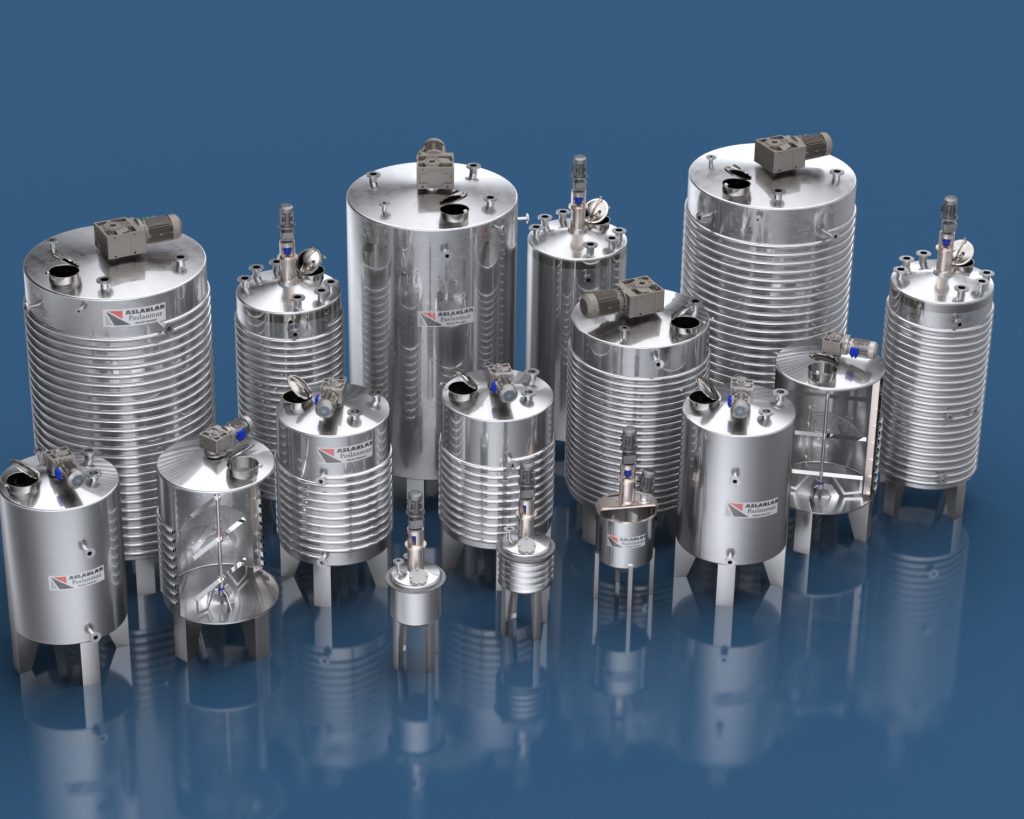Frequently Asked Questions About Stainless Reactors
- Home
- Frequently Asked Questions About Stainless Reactors
Stainless Reactor
A stainless reactor is an industrial device made of stainless chrome sheet metal where chemical reactions take place in a controlled manner. It is used in various industries such as chemical, food, pharmaceutical, and cosmetics that require high pressure and corrosion resistance, durability, and hygiene.
Chemical Industry: Chemical reactions, mixing, and storage.
Food and Beverage Industry: Fermentation, mixing, and storage.
Pharmaceutical Industry: Sterile production processes and storage.
Petrochemicals: Crude oil processing and product storage.
Water Treatment: Chemical treatment processes.
Corrosion Resistance: Stainless steel shows high resistance to chemical substances.
Durability: It has high mechanical strength and is long-lasting.
Hygiene: It is easy to clean and prevents bacterial growth.
Heat Resistance: It is resistant to high temperatures.
Aesthetics: Stainless steel has a shiny and clean appearance.
Stainless reactors allow chemical substances to react under a specific temperature, pressure, and mixing speed. The conditions inside are controlled to ensure the reaction proceeds efficiently and safely.
Regular Cleaning: The inner and outer surfaces of the reactor should be cleaned regularly.
Connection Checks: All connection points and gaskets should be checked regularly.
Calibration: Measurement and control devices should be calibrated periodically.
Rust Control: The reactor surface should be checked for any signs of rust.
Generally, 304 and 316 grade stainless steel are used. 316 grade stainless steel is more common in the chemical and pharmaceutical industries because it shows higher resistance to chemical substances.
The capacity of the reactor is determined based on its intended use, the type and amount of chemicals to be processed. It is usually expressed in liters or cubic meters.
Stainless reactors can last for decades under proper maintenance and operating conditions. The natural durability and corrosion resistance of stainless steel are the main reasons for this longevity.
The cost varies depending on the size of the reactor, the quality of the material used, design features, and additional equipment requirements. Small reactors can start from a few thousand dollars, while large and complex systems can cost tens of thousands of dollars.
Pressure Control: The pressure inside the reactor should be continuously monitored.
Temperature Control: The temperature inside the reactor should be monitored with temperature sensors.
Safety Valves: There should be safety valves that activate in case of overpressure.
Emergency Protocols: There should be written and trained protocols for potential emergencies.
These frequently asked questions and answers provide general information about the basic features and uses of stainless reactors. For detailed information, please contact us.


